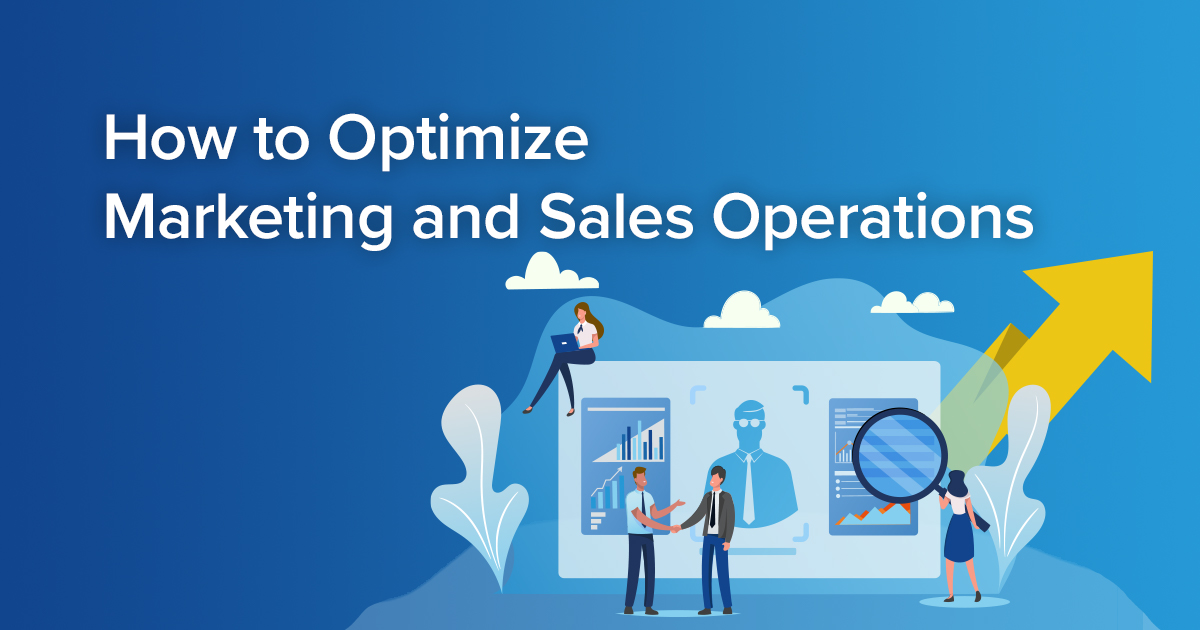
How to optimize marketing and sales operations
In the age of digitization, the value creation processes of companies are experiencing fundamental changes. This also affects the go-to-market processes in particular for the marketing and sales functions. In this blog post, I’ll discuss these changes and their implications for successful operations.
For at least two decades now, the Internet has enabled customers to be increasingly better informed, and the next supplier somewhere in the world is just a click away. A company’s web presence, which is usually designed by marketing, is becoming an increasingly important component in the sales process. The customer’s decision-making process is essentially determined by digital information (content) provided directly by the company itself, but also about the company from third parties.
Where marketing and sales converge
With all of the content available, customers have already completed a large part of what is commonly called the “customer journey” before they come into contact with the provider for the first time. Potential customers now expect accurate, fast, and consistent information across all channels and departmental boundaries between marketing and sales. Go-to-market functions, especially between marketing and sales, are increasingly converging.
In this dynamic environment, unifying all data from marketing and sales has now become indispensable for long-term business performance. On this data basis, it is possible to recognize patterns, to assign the individual behavior of customers to customer groups and market segments, and thus to plan, control, and implement processes successfully. In short, offer them exactly what they’re looking for.
The description of the sales funnel is often used: individual stages of the sales process enable the measurement of key figures from the first contact to the conclusion with a signed contract or product purchased.
The evolution of marketing data
Typical metrics such as impressions, unique website visitors, raw and qualified leads, sales growth, sales target and target achievement, customer acquisition costs, customer churn rate, sales cycle length are among the ever-growing list of marketing metrics becoming commonly used. The collection, control, and analysis of all of this data has evolved into its own business function.
Marketing operations and sales operations, now often collectively referred to as revenue operations are now becoming the norm in organizations of all sizes. Marketing and sales operations are a relatively new function in the go-to-market process that enables marketing and sales to operate efficiently and deliver desired business outcomes through people, process, technology and data. They specialize in technology infrastructure, data and analytics of the go-to-market processes to measure the effectiveness of each channel, the overall performance of the marketing program and the sales organization, and support customer, product and market analysis and A/B testing.
This role manages the various marketing and sales automation platforms, such as the website, CRM system, content management system, and integration with related technologies. They also oversee technology for landing pages AdWords, social media, and account-based-marketing to ensure alignment across the organization. Classic sales-support activities such as sales enablement, sales process development, sales training, sales analytics, sales metrics and sales forecasting are now unthinkable without the above-mentioned data.
Finding and leveraging the right data tools
An additional challenge when executing the revenue operations function is also to ensure that organizations keep pace with the ever-increasing digitization. In the marketing environment alone, the number of known marketing technology (MarTech) tools has grown from about 150 in 2011 to over 7000 in 2020.
In addition to the challenge of keeping up with this in terms of content, there is also the question of how one can continuously create optimum value from nine available options within one’s own technology stack. Being able to flexibly evaluate, analyze, plan and report is indispensable. Although most of the MarTech tools used in marketing and sales operations offer basic analysis and reporting functionality for the particular aspect they support, it is often difficult to map the overall picture of the go-to-market funnel that provides the entire marketing and sales organization much-needed insight and long-term planning capabilities.
Collaboration and integration are key
Maximizing business value through improved collaboration is key to long-term optimization of marketing and sales operations. Integrating all sources of data allows easy modeling of KPIs and easily provide the needed information to stakeholders via the right channels at the right time. A unified data foundation enables a simplified dashboard for the entire company, an Excel-based solution for Finance, and for the sales function directly in their CRM solution. Enable your team right where they work every day.
This approach creates a digital image and aggregation of the sales processes that have grown together as a result of digitization, enabling all stakeholders to have a consistent view of the marketing and sales processes, so that the opportunities offered by an evolving and highly competitive digital world are not seen as a threat, but as an opportunity.





